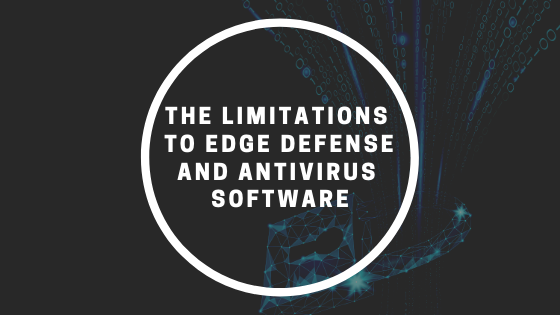For years, cybersecurity has relied on protective edge devices like firewalls, IDS and IPS systems, and anti-virus software, but these solutions are growing insufficient. What role do these edge devices play and how do they fall short of the needs of companies that store individuals’ personal information?
The Functions of Edge Devices and Antivirus Software
While there are a few different types of edge defense that companies use to protect their network, each one has a different function. It is common knowledge that firewalls are used to block and filter out certain traffic coming in from outside sources on the internet. After the firewall, IDS (Intrusion Detection System) devices are used to inspect and detect anything that looks suspicious. When an IDS finds a threat, an alert is supposed to be created. IPS (Intrusion Prevention System) devices function just like IDSs, but also try to proactively stop malicious attacks. There is also antivirus software that is supposed to help detect, identify, and remove malware.
Evolution of Cyberattacks
While this is just a snippet of what these devices try to do (and it truly sounds great), these defensive measures are outdated. Hackers have found new ways to penetrate networks without even having to worry about edge defense. New tactics that involve email phishing, creating websites that can be easily mistaken with other popular domains, unsecured gaming, or video-streaming websites that kids play on, and much more are all ways that hackers use to bypass firewalls and IDS systems without any difficulty. If you think an antivirus program will detect this internal attack, think again.
Today’s Malware
When someone is tricked into allowing access to malware through things such as a dangerous email, using an unsafe USB, going to the wrong website or something else, the malware can do just about anything. Malware today is encrypted so well that it is practically invisible to firewalls and IDS/IPS systems. Not to mention, antivirus programs no longer can stop malware. The VP of Information Security at Symantec, an antivirus software company, said “antivirus now lets through around 55% of attacks.”
Once malware bypasses these edge devices through these other internal passages, it can then gain control of the network, extract data, monitor and hide any other activity, destroy your data, remove your access, or grant themselves authorized access to anything. Sometimes, this leads to ransom attacks. Instead of relying on simple antivirus software and edge defense devices to combat these threats, you need the service of a cybersecurity company that can give you full coverage through something like a SIEM solution.
Cyberattacks continue to evolve each day and edge defenses are growing insufficient. By turning to a cybersecurity company with SIEM solutions, you receive a product and service that provides you with customizable security that will detect, notify, and isolate external and internal attacks alike. To give your company and clients the protection they need from today’s malware threats, contact us today.





